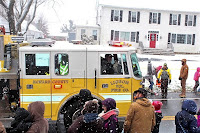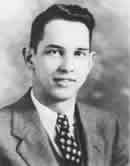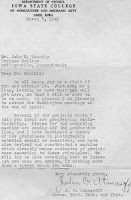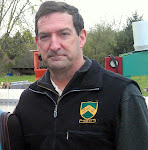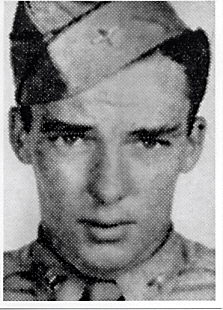 "Lessons from an Emergency" was just published in my local newspaper, Mt. Airy Messenger, under The Way We Were column on Wednesday, March 21, 2018, page 15.
"Lessons from an Emergency" was just published in my local newspaper, Mt. Airy Messenger, under The Way We Were column on Wednesday, March 21, 2018, page 15.However, this editorial is an excerpt from March 28, 1958 in the Mt. Airy, Maryland, Community Reporter local newspaper.
It states that it is "a glance at Mt. Airy's past brought to you by the Mt. Airy Historical Society."
Reading it 60 years later, it indicates a high-level awareness of the necessity for civil defense.
The practical wisdom in it is superb.
We need to become as aware.
The March 28, 1958 editorial follows:
(Yes...kids were tougher then. The toy kit you see was marketed as a toy for kids, U-238 Atomic Energy Labs came with three different types of live uranium ore and a Geiger counter.)
"The recent paralyzing snow storm, which disrupted electric and telephone service, prevented deliveries of fuel oil and hampered efforts of dairy farmers in getting rid of their milk, presented a number of valuable lessons designed to set forth the importance of being prepared for this kind of emergency.
It also pointed up the utter dependence of our present social and economic system upon electric service, for not until something occurs to interrupt the flow of this all-important medium into our homes, farms, stores, offices, and manufacturing plants do we recognize the extent to which we have become the slaves of electrical energy.
Without it [electricity]:
- Many of our oil-heater or stoker-fed furnaces are out of service
- We have to revert to candles or kerosene lamps for illumination
- Automatic washing machines, dryers and irons hold up all laundry operations
- Households who cook on electric ranges are unable to prepare food
- The threat of spoilage in inoperative refrigerators and home freezers mounts
- Radios and television sets are silent while electric sweepers, dish washers, food disposers, percolators, toasters, and water heaters totally stymie housekeeping efforts.
- Father's electric shaver refuses to work and persons accustomed to sleeping under electric blankets shiver the night through.
- On the farm, water systems fail, dairymen cannot operate the milkers while milk spoils in milk-cooler storage tanks.
- Supermarkets and other stores were unable to operate their cash registers, freezer cases warm up, threatening frozen food supplies, while elevators and escalators in department stores are at a standstill.
- Many factories face complete shutdown and unemployment mounts.

But there might conceivably be even worse situations than that caused by a show storm. An atomic bomb could wreak havoc on communities over a wide area. Death and destruction would then be added to the inconvenience and misery caused by the mere interruption of electric service. Surely everyone ought to give sober thought to the possibility of such a catastrophe and resolve to take all measures possible to soften the blow in case it should come. This means more serious attention to Civil Defense organization and planning.
 The recent emergency brought many ingenious methods of overcoming sever hardship. Some homes had fireplaces with supplied of wood handy.
The recent emergency brought many ingenious methods of overcoming sever hardship. Some homes had fireplaces with supplied of wood handy.With these they kept rooms warm and even cooked meals in some instances. Others had camp stoves fed by bottled gas. Little, gravity-fed oil room headers saved the day for others.
On farms a number of farmers operated their milking machines by backing a truck up tot he dairy and attaching their vacuum hose to the mother where they had removed a spark plug. others put sleds into use to get their milk to the main highways, when they could not get their trucks out.
People with heating systems not dependent upon electricity opened their homes to less fortunate neighbors. It is encouraging to observe how people react to emergencies after all.
But the lesson we should have learned is that a little preparation in advance might alleviate hardship and inconvenience in such situations.
Man is a resourceful animal, an can usually find means of caring for his needs when the comforts and conveniences of modern life fail."
The Lessons of a 60-Year Old Emergency as it Applies to 2018
 The Mt. Airy, MD "Lessons from an Emergency" editorial was written 60 years ago.
The Mt. Airy, MD "Lessons from an Emergency" editorial was written 60 years ago.What has changed?
Not much. Except that we are ten times more vulnerable to disruptions in a continuous flow of electric power than Americans were in the 1950's.
Moreover, the threat of atom bombs and intercontinental ballistic missiles has increased. Sadly, these bombs and missiles can come from many more bad actors, from more directions, faster, be more destructive and in minutes...not hours.
Also, the threat of electromagnetic pulse disruptions, from foreign attack, hackers, or solar flares, has increased.
And, the threat of natural disasters impacting Americans is greater because there are twice as many Americans as in 1958.
Are the citizens of Mt. Airy aware of these facts?
Do they care?
 Do any Americans in the tens of thousands of towns just like Mt. Airy all over the United States care about civil defense preparations today?
Do any Americans in the tens of thousands of towns just like Mt. Airy all over the United States care about civil defense preparations today?In just one area, the electric power grid, how vulnerable is our electric grid? Read this and weep.
Here is my blog post attempt to incite a call to action to harden the American power grid before it is hit.
Please explore the wisdom, knowledge, strategies, and practical steps developed by the The American Civil Defense Association over 60 plus years of learning about civil defense issues. It is worth reading the articles and course material found there.
I have been on the TACDA board of directors for 8 years and can vouch for their civil defense knowledge and experience.
We publish the Journal of Civil Defense. The latest issue has my article "When State Hackers Take Aim at the Power Grid." There are many other worthwhile articles in this issue and the Journal of Civil Defense and in its archives.
 Contact: TACDA, 12162 South Business Park Drive, #208, Draper, UT 84020, www.tacda.org, info@tacda.org, 800 425 5397.
Contact: TACDA, 12162 South Business Park Drive, #208, Draper, UT 84020, www.tacda.org, info@tacda.org, 800 425 5397.Sharon Packer, Secretary/Treasurer of TACDA, has posted an excellent discussion of radiation issues on the TACDA Blog. Sharon owns a company that builds bomb shelters and is an expert in this areas. For a quick analysis of electromagnetic pulse (EMP), see here.
There are other American civil defense voices, such as Michael Mabee, in the desert raising the alarm here. And here. And here. If this were a just world, he would be on the National Security Council organizing American civil defense efforts.
What are we doing as a nation to create, test, and implement a national strategy to address these ongoing dangers?
What are you doing as an individual?
What is your family doing?
These threats were there in 1958. They are still here, in even greater degree, in 2018.
Americans are the best in the world at instant civil defense, as proven on 9/11 in New York City. The 9/11 Great Boat Lift, when the U.S. Coast guard, barges, and private boat owners got 500,000 Americans off Manhattan island after the sneak jihadi attack, was much bigger than Dunkirk and much faster.
 The 9/11 Great Boat Lift, done in 9 hours, is a remarkable story of Americans spontaneously saving the lives of other Americans in an emergency.
The 9/11 Great Boat Lift, done in 9 hours, is a remarkable story of Americans spontaneously saving the lives of other Americans in an emergency.It is civil defense at its best, but it is a one-time miracle. Civil defense cannot be based on miracles, but rational planning.
Or you can go back over 2,500 years to Aesop's Fables, especially the Ant and the Grasshopper, for why we need to prepare.
Enjoy making your civil defense preparations now while you have the time and resources. Here is one option if you are young:
If you are 18 to 24 years old and want to serve in support of disaster-related projects, apply for FEMA Corps by April 1 to start in July 2018. Apply here.
























